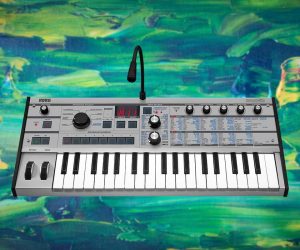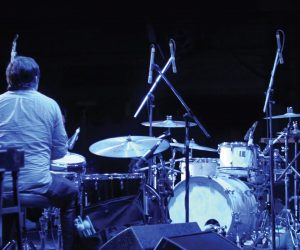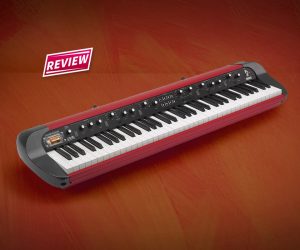
Microkorg: 15 Years Strong
For a while there, Korg ran out of ways to wrap the company name into its model names.
For a while there, Korg ran out of ways to wrap the company name into its model names. The ’70s kicked off with the KORGUE organ, then the miniKORG, followed by the MAXI KORG. It was a good run, but it took almost 30 years before Korg did it again. The MicroKorg is one of Korg’s best-selling synths, probably still behind the M1, but not far off. What’s remarkable about the MicroKorg is its longevity. Unlike other mini synths announced around the 2000s (like the Alesis Micron, Akai Miniak and DSI Evolver) it’s survived 15 years and is still selling strong. To celebrate its anniversary, we took a gander at the new look platinum edition to remember why this has become a mini classic.
A key reason would have to be the mini-keys. Love them, hate them, indifferent, it doesn’t matter. You’re squeezing three full octaves into a synth you can throw in your backpack, and 36 keys is way better than 25. It gives you the chance to play two-handed, or two-fingered, and not have to constantly press the octave up/down buttons.
It introduced the vocoder to a new generation. Sure, it’s only eight bands, but vocoders are tough to set up for a beginner without all the right pieces. Conversely, the MicroKorg made it dead simple — the mic comes in the packaging, the built-in keys filter notes, and you can get it going with one click.
It’s also digital, but models analogue, and it sounds quite good. Plus there’s enough variety in the presets to grab your interest. When you’re looking at buying a synth in a shop, having some decent patches to flip through is everything. Plus, with big knobs for cutoff, resonance, attack and release, all the best twiddles are right there at your finger tips. It’s immediately gratifying.
It also eschews the more mealy process of sequencing but includes an arpeggiator, which is arguably the more instantly fun of the two if you had to choose.
The MicroKorg is also light as a feather, can be battery powered, and has faux wood endcheeks that perfectly fit the ever-growing interest in vintage synths.
Importantly, it’s priced keenly; you get a touch of everything for not much.
The MicroKorg was a mini revolution at a time when mini synths weren’t designed to do much, and it still does plenty today.



























RESPONSES